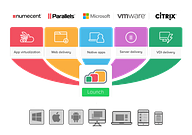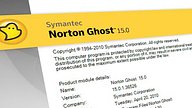How to fix VDI (Virtual Desktop Infrastructure) to improve how you deliver applications

VDI, or Virtual Desktop Infrastructure, was set to be the next big revolution in the virtualization space after VMware transformed the on-premise datacenter.
We all saw the benefits of consolidated desktop management, disposable clone machines, and secure remote access. However, for colleges and universities the solution failed to meet the demanding needs of students, particularly with regards to software deployment and application delivery.
What's the problem with VDI?
For students especially, it's all about the apps. Students want their apps on-demand, wherever they are, and they want their software to just work. TechTarget.com perfectly summarise the trouble with VDI for application delivery:
Nobody cares about the "desktop". The first problem with VDI is that the "D" stands for desktop, and we haven't seen many users clamoring for better access to their desktops. What users really want is better delivery of applications... The desktop is just a container for all of that; you could strip away the desktop, leave the applications and have perfectly happy users.
Tech Target - VDI isn't the only factor to consider for application delivery
Combine this with six-figure infrasturcture investment, plus added staff and support overhead costs, and you've got a solution that's expensive and not fit for purpose. So how can you make VDI work better when it comes to delivering software, both for students and for university IT. And what are the alternatives to VDI for application deployment?
ThinApps, or not?
At the point in time when most colleges and universities purchased their VDI deployment, one of the few application virtualization and delivery products available was VMware’s ThinApp. For basic apps it worked okay, but it was a little clunky using a snapshot delta approach for capturing the target app. Delivery was based on VDI Pools, not user groups, so that tended to lead to the infamous 'VDI Sprawl', as more and more pools were needed for specific apps.
ThinApp also didn’t quite make the mark on being able to handle 100% of the software needed by students. This introduced the dreaded 'VDI Bloat', as more apps were locally installed into Gold Images and they grew in size. At the end of the day, we generally see ThinApp success rates in the 40-60% range.
Read more: Reducing VDI Sprawl and Bloat at Le Moyne College >
Watch: Solving two major VDI challenges at Le Moyne College >
Now, as Gold Images grow in size, and the number of pools grow in count, additional hardware investment is often needed. That makes VDI more and more expensive to support. On top of that, you have the personnel overhead of maintaining and managing such a complex environment, often requiring 3-5 dedicated FTE staff members.
How to fix VDI to deliver apps better
AppsAnywhere, the only university designed app store, is already used by hundreds of education institutions across the world. It takes the pain out of owning a VDI solution, whether it’s VMware or Citrix. AppsAnywhere is the leading software virtualization and delivery solution on the market today. And, it works seamlessly with VDI!
Once you’ve got AppsAnywhere installed and your virtual application packages created, you can start to ‘right-size’ your existing VDI environment. You can slim down your Gold Images to just the bare essentials (e.g. a PDF reader and AV/Malware protection). Because AppsAnywhere supports assignment by user groups, you can collapse many VDI Pools into one for easier management and a cleaner user experience. Finally, you might just be able to scale back on your expensive VDI licenses and support costs, as the entire environment now exactly fits your needs.
AppsAnywhere integrates with leading VDI tools from VMware and Ctirix, and also with Parallels RAS, Microsoft SCCM & App-V, and Numecent Cloudpaging.

Try it now
The list of features and benefits goes on, but it’s best to see it in action! Head over to the AppsAnywhere trial at appsanywhere.com/try
Discover AppsAnywhere...

Improve student outcomes by delivering a better IT service, on and off campus. Make any app available on any device, enable BYOD and repurpose your dedicated lab spaces, all without the need for complex VDI environments.
Further reading...

Send Ghost to the grave: problems and alternatives to imaging using Ghost
If you’re in the IT department at a university you’ve been here. The annual process to refresh lab spaces with a new, updated computer image that takes months to build and deploy. How many more summers will your team be able to commit to this sometimes wasteful task?

What's after VDI? Replacing virtual desktops with application virtualization at PSU
Like many other universities, Pitt State originally chose VDI as the best solution to deploy apps to students. After realizing that performance is patchy and costs are astronomical, the university sought another technology.

Combining Cloudpaging and App-V to virtualize 99.9% of apps with AppsAnywhere
Independent virtualization expert Rory Monaghan explains 'application isolation', his love of Cloudpaging, and why AppsAnywhere's the most exciting product he's seen in a long time.